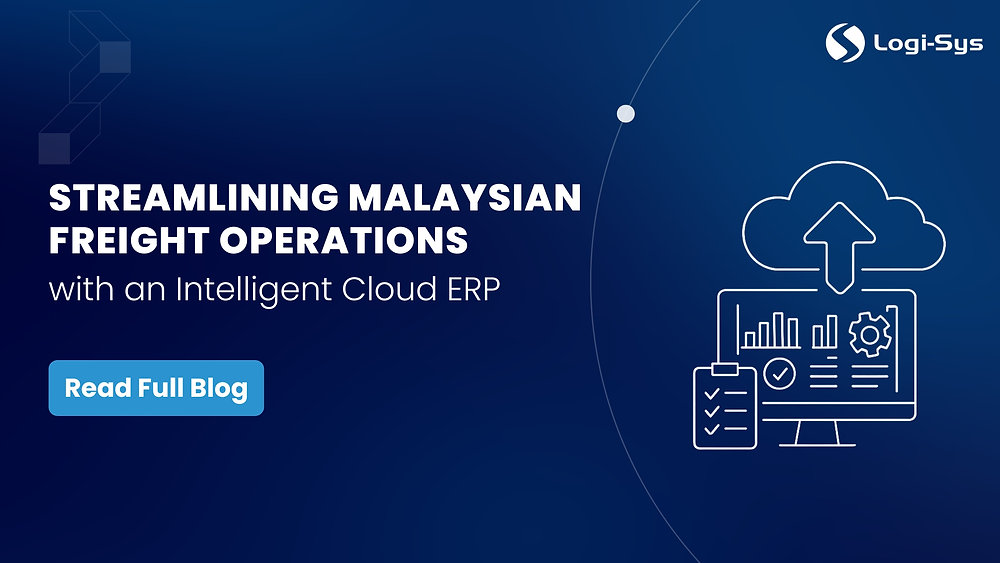
Step into any freight forwarding office and you’ll likely find the same story: multiple teams managing different tools, manual data entry, and frequent follow-ups to get a single shipment billed, cleared, and reconciled. For Malaysian freight companies navigating regulatory updates, rising operating costs, and growing customer demands, this fragmented setup is no longer sustainable.
Manual Gaps That Break Profitability in Freight Operations
Profit margins in freight forwarding are won—or lost—in the handoffs: between sales and ops, operations and finance, documentation and compliance.
When these handoffs rely on manual processes or disconnected tools, things slip. A missed rate update. A delayed invoice. A customs filing not reflected in accounts.
Over time, these gaps erode profitability.
In many freight businesses, teams operate in silos—each managing their own spreadsheets, standalone systems, or messaging groups. But without centralized control, there’s no reliable way to track costs, charge accurately, or ensure compliance.
It connects departments in real time, automates data flow, and ensures that every action—shipment update, invoice generation, tax filing—stays aligned with the rest of the business. The result: fewer delays, better cash flow, and complete control over operational and financial performance.
Aligning with IRBM Compliance—Without External Tools
Malaysia’s e-invoicing mandate from IRBM is pushing freight businesses to rethink how they handle billing, tax, and audit trails. For companies over RM100M in annual turnover, digital submission of invoices via MyInvois is already in effect—and others will follow in phased rollouts.
E-invoicing is built into the system’s core—meaning freight forwarders can generate, validate, and submit IRBM-compliant invoices directly from within the platform. There’s no need for third-party integration or manual uploads. Every document is synced with your shipment records, financial postings, and tax filings in real time.
A Single Platform That Scales with You
As many Malaysian forwarders expand regionally or diversify their services, scaling operations becomes a challenge. More branches, more volume, more complexity.
What they don’t need is more software.
Logi-Sys offers multi-branch, multi-modal, and multi-currency support on a single database—so whether you’re managing air exports from KLIA, ocean imports at Port Klang, or cross-border trucking into Thailand, your team operates with one version of the truth.
Unlike generic ERP systems, Logi-Sys is designed for the freight industry from the ground up. It includes shipment management, documentation, customs, CRM, billing, accounting, and compliance—all integrated and always in sync.
That’s what sets it apart from other freight management systems. You don’t have to bolt on modules or patch workflows—it just works, end to end.
Freight Visibility Is Operational Power
Visibility isn’t just about knowing where a shipment is. It’s about knowing what’s been billed, what’s pending, what’s been filed with customs, and what’s outstanding in receivables.
With Logi-Sys, visibility becomes actionable. Your operations team sees updates in real time. Your finance team works off the same data. Your leadership sees branch-level and business-level performance in a single dashboard.
And when everyone works from the same system, things move faster—with fewer errors, escalations, or missed revenue opportunities.
Beyond Efficiency: Built for Control, Security, and Scalability
Today’s freight businesses demand more than just automation—they need complete control, security, and visibility at every stage of their operations..
Here’s how Logi-Sys supports high-performance freight operations:
-
Enterprise-grade cloud infrastructure ensures data availability and system uptime across all locations.
-
Advanced data security with role-based access, audit trails, and financial/operational locks.
-
Multi-branch and multi-country control from a single platform with unified databases.
-
Built-in mobile access allows on-the-go shipment updates, approvals, and status tracking.
-
Automated e-invoicing and tax filing fully aligned with IRBM mandates.
-
Real-time shipment tracking across air, sea, and road modes, with customer visibility portals.
-
Integrated CRM and quotation workflows that sync with operations and billing.
-
Dynamic rate management for buy/sell rate comparisons, margin visibility, and auto-rating.
-
Financial and operational dashboards for business leaders to view profitability by branch, service, or lane.
-
End-to-end integration—from sales to documentation to collections—without needing third-party systems.
-
Disaster recovery and backup readiness built into the architecture.
-
Customs filing integrations with Malaysian ports and cross-border authorities.
-
User-configurable alerts, reports, and workflows to support diverse freight models.
Whether you’re dealing with customs filing, finance approvals, or client updates, Logi-Sys brings freight operations into a secure, agile, and scalable environment.
Think Freight. Think Forward. Think Logi-Sys.
There’s no shortage of tools claiming to help freight forwarders. But very few are built around the real operational demands of the business.
